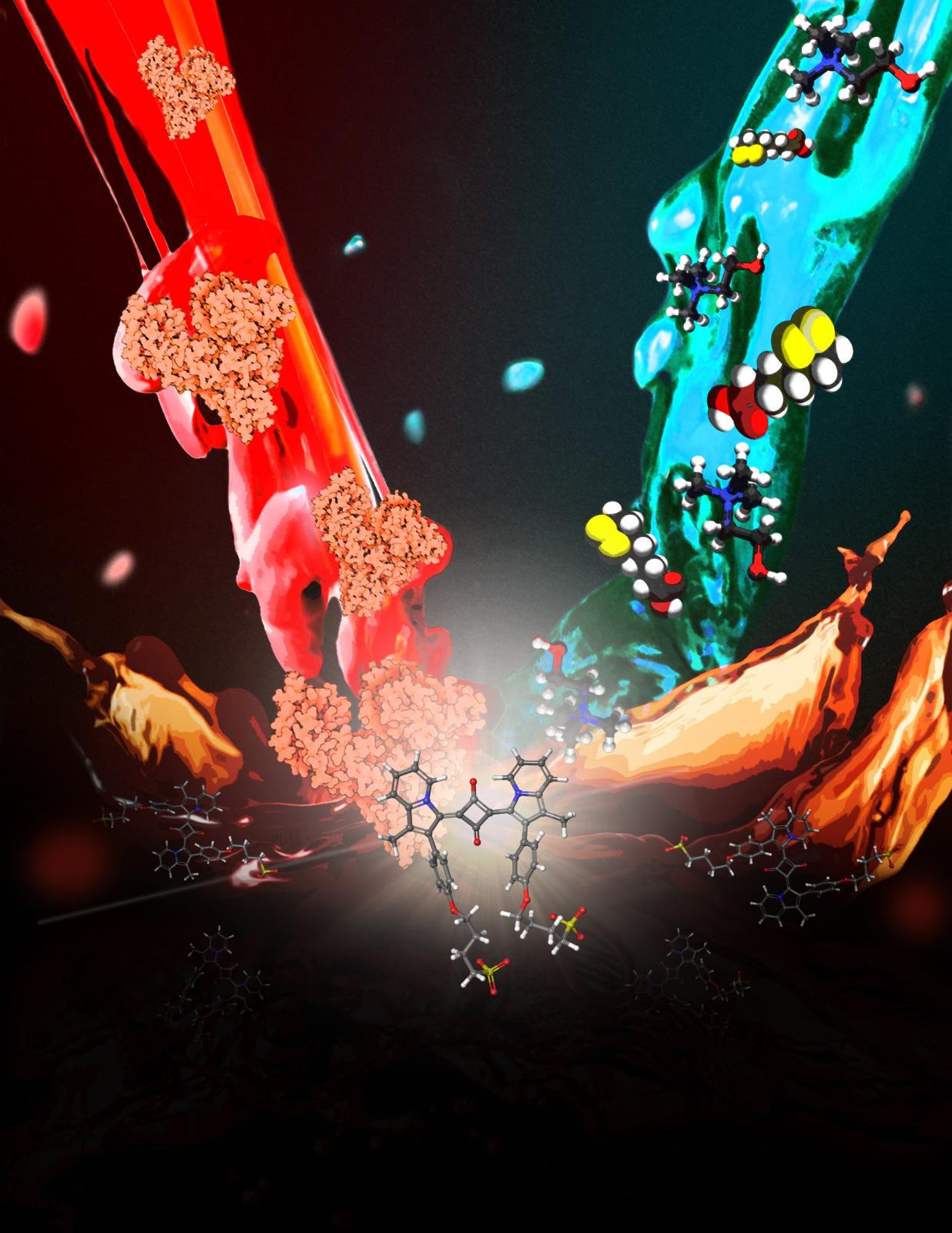
Researchers at the University of Mississippi and Tougaloo College have developed a biocompatible ionic liquid that locks a near-infrared dye into an ultra-bright configuration in the presence of human albumin, a primary component of human blood serum. This allows them to visualize bloodstains in ambient light conditions.
The ability to tune a dye to be able to visualize human serum albumin in a switch-on/switch-off modality has several important possible applications, including in crime scene contexts for identifying human blood, and as bioimaging agents to visualize blood flow.
Albumin is the most abundant protein in human blood. Directed interactions with the albumin protein can help us to identify and illuminate human blood in a more reliable way than past technology, which required the hemoglobin in the red blood cells to catalyze a chemiluminescent reaction that is deactivated in the presence of cleaning products. Although organic dyes have been developed that show appreciable fluorescence in the presence of albumin, in a whole blood matrix, this fluorescence is dampened. The addition of ionic liquid to the mixture promotes specific interactions with the albumin over the other blood components, resulting in a much more selective and sensitive detection method for human blood.
